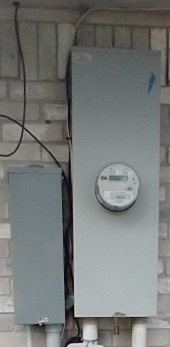Utility wants a disconnect switch, no problem except my meter has three outputs. OK, find a 400 amp disconnect panel big enough to add dual three lugs out.
Just talked with an electrician and he said a transfer switch is also needed to switch from grid to inverter source. With the grid disconnected, won't a hybrid inverter continue to convert solar/battery to AC?
Just talked with an electrician and he said a transfer switch is also needed to switch from grid to inverter source. With the grid disconnected, won't a hybrid inverter continue to convert solar/battery to AC?



